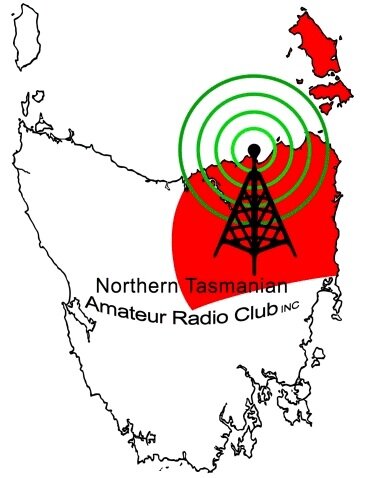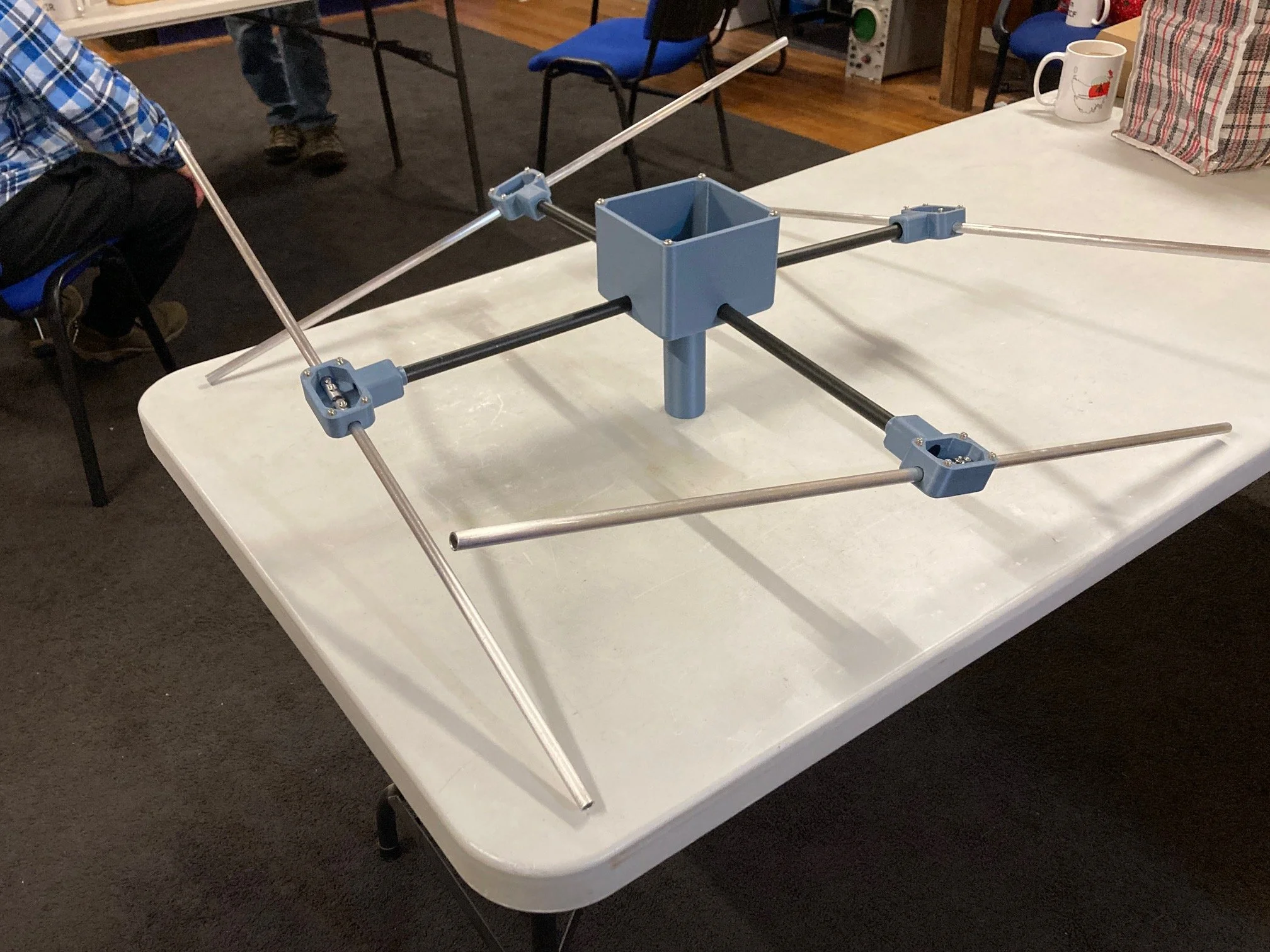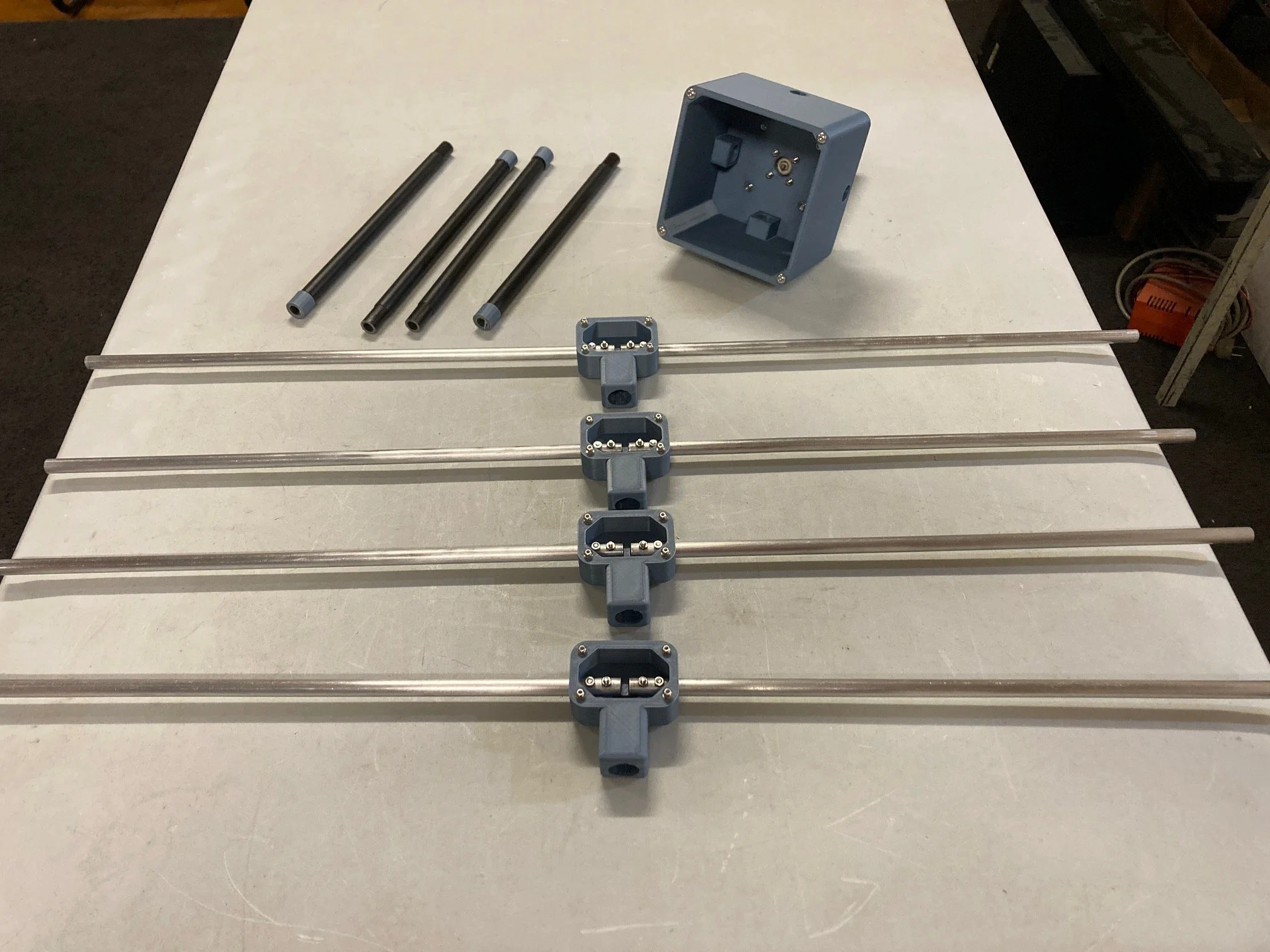Broadcast - 19 October 2025
Users of VK7RAA, 2 Metre repeater on Mount Arthur, please note that due to the ongoing problem with the squelch opening it has been decided to implement tone access. This will require your transceiver to send a CTCSS sub-tone of 123.0 Hz on your transmissions. This change will be implemented in the near future, depending on weather and site visits. It will stay in effect until we can resolve the interference problem.
At the last Clubroom Technical night Andre’ VK7ZAB had some printouts of WSPR data and map of a station received earlier that day on the 10 Metre band by VK7TAZ and VK7OO. Its station ID was VS1ERZ, initially assumed to be New Zealand, except its grid square was for Northern Tasmania! A quick search of the net revealed it was a Pico Balloon launched back on the 16th August, but not from New Zealand, it was in fact launched from South Africa, and still circling the earth after more than sixty days. Flight path was from west to east over Tasmania, assisted by the roaring forties. It presented a strong received signal from only a 20 mW transmitter.
After last week’s General Meeting Andre’ VK7ZAB displayed his latest SSTV photo decodes from ARISS for the “2025 World Space Week” which celebrates another anniversary of SPUTNICK-1’s launched on the 4th of October 1957. Apart from having some nearly noise free pictures when the International Space Station was low on the horizon, Andre’ was able to display the same image that was decoded simultaneously on two receivers. One radio was connected to a five eighths vertical antenna and the other connected to a quarter wave vertical antenna, both were relatively close together giving the same sky capture window. It was interesting to see the differences in picture noise bands between the two decodes, which was dependant on the flight path of the ISS for that pass.
Inevitably the discussion turned to antenna types, ending up with a suggestion from Lionel VK7ZLB that Colin VK7ZCF should have look at a Lindenblad antenna. The Lindenblad antenna is a type of circularly polarized, omni-directional antenna. It consists of four dipole elements arranged in a circle, each tilted at 30 degrees from the horizontal, creating a radiation pattern that is ideal for accessing satellites. This antenna is particularly useful as it can handle both horizontal and vertical polarizations, making it very versatile.
Colin based his on a version published by Anthony Monteiro AA2TX in QST August 2007.
Move forward seven days to our Technical Night. Colin turned up with his “work in progress” antenna. We were expecting the usual amateur radio operator mash up to test the concept, before it goes into the refinement stage, if ever. HiHi But Collin started removing a heap of parts from his bag and started assembling the antenna. The difference being all structural parts were either 3D printed or fibreglass rod.
The centre of each dipole had a 3D printed enclosure. The feed hole into the enclosure allowed a ferrite core to be inserted followed by a 3D printed coupling ring reducer that accepted the hollow fiberglass support rod. The coaxial cable would then pass through the centre of all these parts. The rods from the four dipoles are then connected to a 3D printed central hub and mounting adaptor.
In less than a week he had designed his own dipole centre enclosures, the main hub enclosure and adapters as well as converting the design for 3D printing and printing all the parts. Evidently the main hub enclosure took about ten hours to print. Just for good measure Collin also designed and printed a pole mount assembly where the feeder coaxial cable and connector would fit up the centre allowing it to mount directly on top of a hollow pole and attach to the main hub.
I think that’s a pretty amazing achievement, especially considering the time frame. To do it justice check out the pictures on the NTARC Web site. Hopefully next time we see this project the dipoles will all be coaxial cabled back to the main hub feed connector and it will be ready for testing.
I wouldn’t be surprised if you can see it on the NTARC table at Miena this year, probably along with many other examples of Collin’s handiwork.
As always pictures will be available on the NTARC Web site under “Blogs” for this broadcast. NTARC Blogs
UPCOMING EVENTS
On Air Test and Technical Net session - Every Wednesday, Test-Net and CW course on 3.580 MHz from 7 pm, then a Technical Net on 3.567 MHz from 7.30 pm till 8.30 pm. Your host for the evening is Nic VK7WW.
Club Room Technical night - The next session will be this Wednesday the 29th of October and will commence at the usual time of 6.30 pm at the Club Room Archer Street, Rocherlea.
Coffee Morning - Held every Friday in the NTARC Club rooms. Time is from 10 am to noon.
Finally – If you have any items of news please email them to the Secretary at the following address news@ntarc.net all items to be received no later than 5 pm on the Friday prior to the Broadcast.
That’s all folks,
73, Stefan VK7ZSB.







